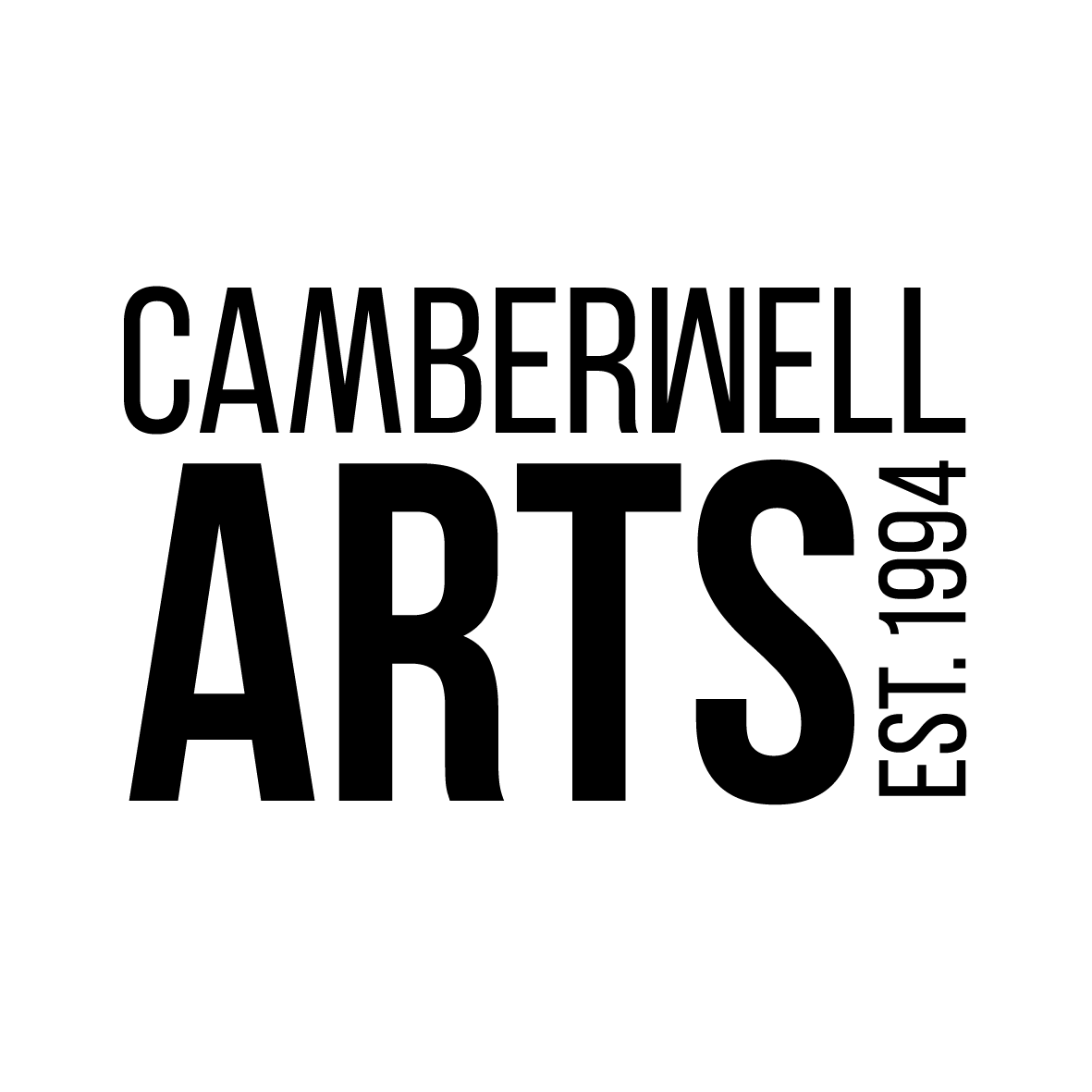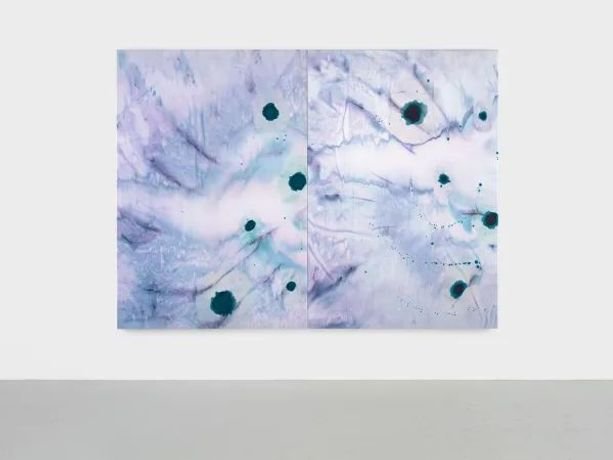Sim Smith is proud to present Add More Fuel To Your Life, Max Boyla's first solo exhibition at the gallery. Still studying at the Royal Academy Schools, this exhibition charts Boyla's practice over the last few years. The exhibition develops across his first 'Poster Paintings', to explorations through ceramic and most recently large 'Spillage' works, abstracted forms on satin and velvet in ink and oil.
Boyla has an inherent interest in his and our position in the world. Through his work, he explores the cultural tropes of masculinity alongside a fervent awareness of our ecological predicament and a fascination with space, the infinite and dimensional perspective. In this exhibition, he effortlessly links all three, a time traveller of sorts, he stretches time and stands it still whilst holding up a microscope up to our generation.
Boyla talks of an "Infinite Space Ghost" at the start of his practice, a character who embodies him within a painting, based on a shadow of himself lurking onto a canvas. This character was originally set in vague but descriptive backgrounds, merging space and various imagery. This was Boyla's first attempt to put figuration into the unknown. It was a start of thinking about concepts of infinity and questioning how we as humans can live within that concept - asking how a human soul can compete with such a vast and expansive universe. This work progressed into the 'Poster Paintings' that we see in this exhibition. They are rooted in historic machoism within painting and art practice and symbolically, on the most macho image Boyla could think of - the Marlboro cigarette cowboy images from 1970's advertising. By choosing this imagery, he is able to make fun at the personas and connotations whilst also acknowledging his position.
"We are now more responsible for our position in the world. We have to think about our privilege and who we are and what we paint and why we paint it. I wanted to explore what that was." - Max Boyla, December 2022
The early 'Poster Paintings' looked to appropriation, to artists like Richard Prince, Cindy Sherman and others who play on the edge of what appropriation and stealing is. The idea of the Cowboy seemed quite poignant - the idea of them, their culture, an embodiment of macho, white male America. Bad guys who were portrayed through cinema and advertising as heroes. They seemed to be able to tame nature, they could control it and it belonged to them. There is an element of the pioneer in the cowboy but also a destructive force at play. For Boyla this encapsulated how far we have pushed our environment, only now we are dealing with the environmental repercussions of our actions. The making of the 'Poster Paintings' started with a costume, a ghost costume Boyla made and wore and photographed himself mimicking a Marlboro advert to the point of parody. The images were manipulated on Photoshop until they could exist on their own. Applied onto canvas the image would be painted and sanded, in a play of embellishment and destruction. The paintings then started to appropriate imagery more directly, re-photographing stills from films and other artists' work. Boyla would take an image, draw over it on his phone, upload it, photograph it, then Photoshop. By the end it would be heavily pixelated and digitised, glued onto canvas, spray painted, sanded and painted. There are sunsets, and wide brimmed hats and the iconic plumes of cigarette smoke, the perfect summarisation of toxic masculinity to Boyla. These pieces merge fictionalisation, illusion, appropriation and reality, driving machoism to a point of questioned reality.
Next came the 'Shells'. His childhood home is Musselburgh, on the coast of Firth the Forth and 5 miles from Edinburgh. The name Musselburgh is Old English in origin, with mussel referring to the extensive shellfish beds which line the shore on the Firth of Forth. There was a big Shell Garage in the town, dead shells and mussels would wash up on the beach because of the polluted water. Growing up looking at old Shell imagery informed some of the paintings in a similar way to the cowboys. Old Shell marketing campaigns showed ghostly creatures promoting the supposed harmless nature of Shell's product in comparison to the inferior offerings of their competitors. The adverts were smokey, saturated, heady. Illusionistic and incredibly harmful to collective opinion and the environment. The 'Shells' in Boyla's work explore the ability to find shelter in something which can also be oppressive, a duality that can prove difficult to recognise but also to escape. The shells are objects that become old relics. We are in an in-between time where ways of thinking and living are starting to change. Boyla skilfully and beautifully highlights this juncture with glossy, cracked ceramic shells, refuges and trappings that we are asked to shed.
The 'Spillage Paintings' are Boyla's most recent works. Large pseudo-psychedelic works in ink and oil on satin and velvet. The term 'Spillage Paintings' comes from the idea of excess production, unusable substances with all of their negative connotations. The paintings deal with the concept of eternal recurrence and other worldly parallels.
"If you think about space, do you believe that it has an edge or not? If it doesn't, it will go on forever. The odds are infinite and then it will have to repeat itself. If space does have some sort of edge, then nothing exists outside of the confines of its existence. Everything recombines and happens again. Our existence is like living on the disc of a CD" - May Boyla, December 2022
Boyla is fascinated by dimension. These works are made in a 3D sense; folded, twisted, manipulated, painted with different inks, moved around, used as a mop for materials. Ink and pigments seep in to form a 3D object which is then flattened and stretched out onto a canvas to create a 2D object. Suddenly we are in a 4D perspective, looking at an abstract reality. The 'Spillage' works require you to bring your own perception - part abstraction, part landscape, they are highly emotive. The surface is slightly reflective, making the viewer part of the work, it changes as you move around it. The materiality of the satin used in these works depicts a lineage of mass production and fossil fuels, they are made from polyester satin derived from petroleum. In opposition to their seemingly pleasing surfaces of pale pinks, purples and blues, they are steeped in their ties to production, poison, extraction and our history.
The exhibition centres on Boyla's awareness - of an antiquated system that no longer works, a mindfulness of our position and legacy as a generation, and a curiosity of what might exist outside of what we consider the realms of possibility. He lures us in through glossy exteriors and epic storytelling and invites us to sit still a moment and contemplate what the possibilities could be.


